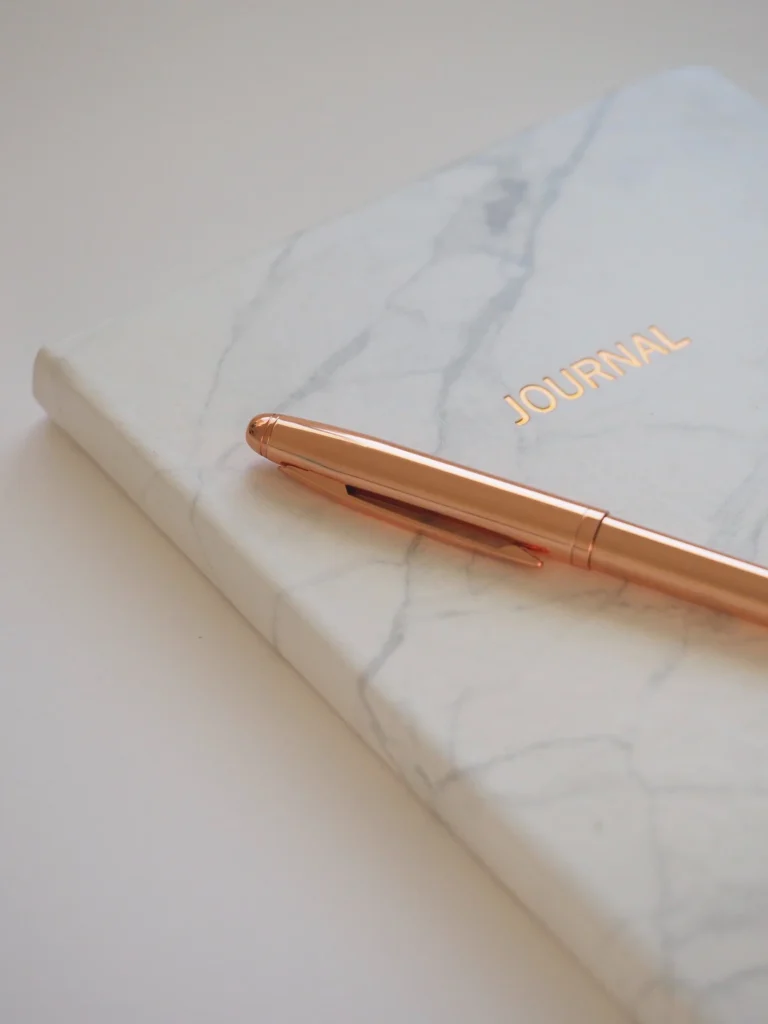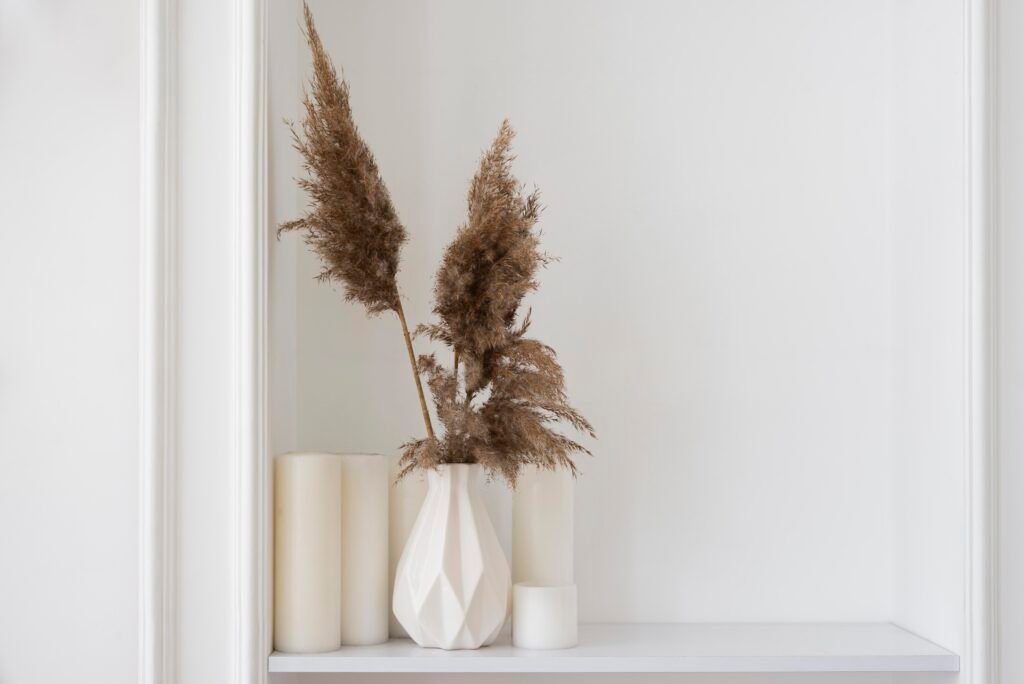Feeling out of balance or constantly running on autopilot? The Holistic Wellbeing Challenge is your gentle 21-day reset — designed to bring calm, energy, and balance back into your daily life.
It’s a gentle reminder to take care of yourself first. Just 5–15 minutes of your own time each day can work wonders — helping you reset, recharge, and feel more like yourself again.
Start building a daily habit of giving yourself just 5–15 minutes for your well-being.
Each day gives you one simple step to care for your body, mind, and soul.
It’s not about being perfect — it’s about taking small steps that help you feel calmer, more grounded, and alive.
In this post, you’ll find easy ways to take better care of your wellbeing every day. Simple ideas, short moments, and small habits that help you slow down, relax, and feel more balanced.
Let’s dive in.

Stay hydrated during the day (Day 1)
Drinking water sounds like such a basic thing, right?
Yet so many of us forget how important it actually is. Staying hydrated is one of the easiest (and cheapest!) ways to boost your energy, improve your mood, and support your overall wellbeing.
Here’s what drinking enough water does for your body and wellbeing:
- Helps you feel less tired and more energized
- Delivers nutrients and oxygen to your cells
- Flushes out toxins and bacteria from your system
- Aids digestion and prevents constipation
- Keeps your joints cushioned and flexible
- Protects your organs and tissues
- Balances electrolytes and regulates body temperature
Most health experts suggest following the simple 8×8 rule — about eight glasses (8-ounce/2 liters) a day. Easy.
To make it easier, keep a reusable bottle nearby and take small sips regularly. Your body will thank you!
Short deep breathing session (Day 2)
Deep breathing — also known as diaphragmatic or belly breathing — is one of the simplest ways to calm your mind and relax your body.
When you breathe deeply, air fills your lungs fully, your belly gently rises, and your body gets a fresh boost of oxygen.
Taking just a few minutes a day to slow down and breathe mindfully can make a big difference. It helps reduce stress, improve sleep, boost energy, support digestion, and even strengthen your immune system.
Here’s an easy way to start:
- Place one hand on your heart and the other on your belly.
- Inhale slowly through your nose, letting your belly rise as you fill your lungs.
- Exhale gently through your mouth, pulling your belly in as if you were blowing out birthday candles.
- Notice how your body feels after each breath.
Repeat this for 3–5 rounds and feel how your mind and body soften with every breath.
You can do it anywhere — at work, at home, while sitting, standing, or even walking. It’s also a lovely way to start your morning, right after you wake up.
Mindfulness during busy workday (Day 3)
Let’s be honest — once the workday starts, time flies.
One moment it’s Monday morning, and before you know it, it’s Friday again. We often move through our days on autopilot, rushing from one task to another, barely noticing how fast time slips by.
That’s where mindfulness comes in. It’s all about being fully present in the moment — without judgment or distraction. Instead of worrying about what’s next or replaying what already happened, mindfulness helps you focus on the now.
It can be as simple as noticing your breath, the sounds around you, or how your body feels.
So, how can you bring a little mindfulness into your busy workday?
- Prioritize your tasks and focus on one thing at a time.
When you give your full attention to just one task, you’ll notice you feel calmer, more productive, and less overwhelmed. Try to slow down and be fully engaged with what you’re doing, even if it’s something small. - Take mindful breaks.
Throughout the day, pause for a few moments to reset. Take a few deep breaths, take some glass of water or step outside for some fresh air. These short mindful pauses can help clear your mind and bring your focus back. - Enjoy a calm coffee or tea break.
I know it may be hard to not take your phone while sipping, but. Really, try to really notice the aroma, warmth, and taste of your drink. Don’t think about anything else at this moment. Feel the cup in your hands, take slow sips, and simply enjoy the moment. This small ritual can turn your coffee break into a peaceful mindfulness practice.
Journaling – write 3 small goals you want to achieve (Day 4)
Journaling is one of the most grounding and mindful habits you can start for your wellbeing.
It’s simply the act of writing down your thoughts and feelings to understand them better. When you put your thoughts on paper, you give them space to breathe — and that helps you see things more clearly.
This simple daily practice can help you process emotions, calm your mind, and gain a sense of control, especially on busy or overwhelming days.
To start, grab a notebook or even a piece of paper — something you can fill with your everyday thoughts.
Write down three goals you’d like to achieve in the near future. Think about:
- What areas of your life do you want to grow in?
- What small, specific goals feel meaningful right now?
There’s no right or wrong way to journal — just write what feels true for you.
It’s your space, your pace, and your journey.

Gratitude — A Simple Wellbeing Habit to Feel Happier (Day 5)
Practicing gratitude is one of the most powerful wellbeing habits you can have.
It helps you shift your focus from what’s missing to what’s already good in your life — the people, moments, and little things that bring warmth to your day.
Even just a few minutes of gratitude each morning can help you feel calmer, more positive, and more grounded.
It reminds you that happiness doesn’t always come from big changes, but often from noticing the small, beautiful things that are already around you.
How to start?
Grab your journal or a simple piece of paper and write down five things you’re thankful for today. It could be something as small as your morning coffee, the sound of birds, or a message from someone you care about.
As you write, pause for a moment and really feel the gratitude.
Let it fill you with lightness and peace.
Over time, this habit trains your mind to focus on the good — and that’s where true wellbeing begins.
Create your goals vision board (Day 6)
It’s one of my favorite wellbeing tips because I’ve always loved visual things — beautiful photos, inspiring words, and calming colors.
I usually use Pinterest, as it’s the easiest and most fun way to find inspiration for your goals board.
You can make a digital vision board there or create one the traditional way by printing out photos, quotes, or images that reflect your dreams.
Choose pictures that make you feel inspired — maybe your dream home, a peaceful morning, or a reminder to take care of yourself.
As you put it together, notice the patterns that appear. They often show what truly matters to you.
Keep your vision board somewhere you’ll see it daily.
Let it gently remind you to take small, intentional steps toward your dreams.
Daylight and walk in fresh air (Day 7)
Daylight and fresh air are such simple yet powerful ways to boost your well-being. Remember, that even on the busiest days, their effect on your mind and body can be amazing.
Just look at a few quick wellbeing benefits below:
Vitamin D boost: Sunlight is the best natural source of vitamin D. It keeps your bones, muscles, and immune system strong. Even a few minutes outside can lift your energy and mood.
Better sleep and rhythm: Daylight helps your body stay in tune with its natural sleep-wake cycle. Getting light during the day helps you feel more awake, sleep better at night, and stay in a good mood.
Happier mind: A few deep breaths of fresh air can calm your mind right away. Natural light and oxygen trigger “feel-good” hormones that reduce stress and boost happiness.
Healthier body: Walking outside is one of the easiest ways to care for your heart and lungs. It’s gentle, refreshing, and helps your whole body feel more alive.
So, try to get a bit of daylight and fresh air every day — maybe a short morning walk, lunch outdoors, or just a few minutes by a sunny window.
You’ll feel more grounded, calm, and recharged.
Do a 5-min meditation (Day 8)
Meditation is one of those must-have practices for both your daily and long-term wellbeing.
Even a short 5–10 minute session can calm your mind, reduce stress, and improve your focus. And if you think meditation isn’t really “your thing,” just give it a try. It might feel strange or even hard at first — our minds are constantly busy with thousands of thoughts, and sitting still doesn’t come naturally. But that’s okay.
When thoughts come (and they will), simply notice them, accept them, and gently let them go. Then, return to your calm, steady breath.
There are many types of meditation to explore, but you can start with something really simple and effective — breath awareness, also known as mindfulness of breath.
Here’s an easy way to begin:
- Find a quiet, comfortable spot where you won’t be disturbed.
- Close your eyes and take a few deep breaths to relax your body.
- Bring your attention to your breathing — feel the air moving in and out of your nostrils, or notice your chest rising and falling.
- Try to stay with your breath. When your mind wanders (as it will), simply notice the thought and gently bring your focus back.
- Start with just a few minutes and slowly increase the time as it feels more natural.
- You can also add the sound OM or AUM as you breathe. With each soft vibration, your voice can work like magic — helping you feel calmer and more grounded.
The beauty of this simple practice is in its consistency.
Each time you bring your attention back to your breath, you’re strengthening your ability to stay present — creating a little more peace, clarity, and space within yourself.
Over time, meditation can help reduce anxiety, improve sleep, and build emotional resilience.
Just remember: there’s no perfect way to meditate — only your way.
Morning routine (Day 9)
Morning rituals are your little wellbeing investment in yourself — a peaceful start before the world wakes up.
The idea is simple: rise a bit earlier than everyone else and do something that nourishes your body or mind.
Even just five quiet minutes can make a big difference. With time, you can extend it and build a routine that feels natural and enjoyable.
Your morning rituals don’t have to be complicated.
They can include gentle yoga or stretching, a few minutes of meditation or mindful breathing, a short walk in nature, reading a few pages of an inspiring book, or simply listening to uplifting music.
Each small action helps you feel more grounded, mindful, and ready for the day ahead.
If you’d like more ideas to build your own slow and mindful start, check out my post: “9 Slow Morning Routine Habits That Actually Work.”

Colorful lunch (Day 10)
You really are what you eat — and the more colorful your plate, the better you’ll feel.
When we eat heavy, processed foods, it’s no surprise we end up feeling tired and low on energy.
But when we fill our plates with fresh, vibrant ingredients, everything starts to feel lighter and brighter.
So, try to add a rainbow of fruits and veggies to your lunch. Each color brings its own special benefits:
- Red and pink foods like tomatoes, watermelon, and strawberries are rich in lycopene, which supports heart health and vitality.
- Orange and yellow foods such as carrots, sweet potatoes, and citrus fruits are full of beta-carotene, helping your eyes and immune system stay strong.
- Greens like broccoli, kale, and spinach are packed with antioxidants that support detoxification and help your body reduce inflammation.
By mixing different colors on your plate, you’re not only making your meal look beautiful — you’re also giving your body a wide range of vitamins and minerals to keep it strong and balanced.
Plus, it’s not just about the nutrients. Taking time to prepare and enjoy a colorful, nourishing lunch can be a mindful pause in your busy day.
It’s a simple way to slow down, recharge, and bring more positive energy into the hours ahead.
Social media detox (Day 11)
In today’s world, we spend hours in front of screens — often from the moment we wake up until the moment we go to bed.
And somehow, even our “rest time” turns into scrolling time. But the truth is, scrolling doesn’t really help us rest. It keeps our mind busy, not relaxed.
That’s why a social media detox can feel so refreshing.
Stepping away from the constant stream of information gives your mind a break.
It helps you disconnect, reduce stress, and make space for activities that truly support your wellbeing.
A simple place to start is disconnecting two hours before bedtime.
The blue light from phones can affect your melatonin levels, and all the constant updates can overstimulate your mind. Together, this makes it harder to fall asleep and stay asleep.
By logging off earlier, you allow your mind to slow down and prepare for rest.
This small habit can help you fall asleep faster and wake up feeling more refreshed.
Yes, yes. Everyone’s routine is different, but creating a consistent “offline” bedtime ritual is a gentle way to support better sleep and overall holistic wellbeing.
Emotional awareness (Day 12)
Emotions are something we should all learn about early in life — they’re just as important as any school subject.
And as we grow, understanding our feelings becomes even more valuable.
Emotional awareness simply means noticing what you feel, understanding it, and recognising how your emotions influence your actions and the people around you. It also helps you connect with others through empathy and clearer communication.
Moreover, studies shows that emotional intelligence strongly supports our happiness, relationships, and even work performance.
People who understand their emotions tend to manage stress better, build healthier connections, and adapt more easily when life changes.
To begin building this awareness, you can try one (or both) of these simple practices:
Body Scan
A body scan is a gentle way to slow down and reconnect with yourself.
- First, find a quiet and comfortable place to sit or lie down.
- Then take a few deep breaths to settle in.
- Next, start at the top of your head and slowly scan down through your body.
- As you move downward, notice any tension, tightness, warmth, or ease — simply observing without judging.
- And if your mind wanders, gently bring your focus back to your body.
- Continue until you reach your toes, and finally, take a deep breath to release any remaining tension.
This practice helps you become more present and aware of how your emotions show up in your body.
Label Your Emotions
This is a simple daily check-in that can make a big difference over time.
- To start, take a short moment to pause and look inward.
- Then name the emotion you’re feeling — for example, “I’m anxious,” “I’m frustrated,” or “I feel calm.”
- As you label it, try to observe the emotion without judgment or pressure.
- And if identifying your feelings feels challenging, you can use an emotion wheel for guidance.
With regular practice, you may find that recognizing your emotions becomes easier — and as a result, you’ll respond to them in a much healthier and more balanced way.
Try something new for the first time (Day 13)
Trying something new — even something small — is a simple way to support your holistic wellbeing.
When you step outside your usual routine, you gently challenge your mind and bring fresh energy into your day.
It can also ease stress by giving your brain something different to focus on instead of its everyday worries.
Even if the shift is brief, it’s a nice reminder that curiosity, joy, and new perspectives are always available.
Here are a few ideas to get you started:
• Go to a new restaurant and explore a different cuisine.
• Find a new hiking trail or outdoor spot to wander.
• Visit a neighborhood you’ve never explored and pop into a museum.
• Spend some time at the library and pick up a book you normally wouldn’t read.
• Try an activity you’ve never done — climbing, salsa dancing, golf, pottery, anything that sparks interest.
I personally love exploring new places — wandering through the old town, stepping into quiet courtyards, discovering hidden gems, and trying coffee in different cafés.
And my latest “try something new” was a big one: my family and I decided to live in a new country for a year. It turned into a completely new and unforgettable experience.
Little by little, each new experience gently expands your world.
Declutter home (Day 14)
Decluttering is a big one — and honestly, a very important step for holistic wellbeing. A tidy space often leads to a calmer mind.
When you clear out what you don’t need, you create more room to breathe, think, and relax.
Why decluttering helps for your wellbeing:
- Less stress: Clutter can make any space feel heavy and overwhelming. Clearing it out creates a calmer, lighter atmosphere.
- More productivity: With fewer distractions around you, it’s easier to focus and get things done.
- Time saved: When everything has its place, you spend less time searching and cleaning.
- Mindfulness boost: Decluttering helps you notice what truly matters and let go of what doesn’t.
- More control: A clean space naturally makes you feel more organized and empowered.

How to start (keep it simple):
- Set a small goal: First, begin with one drawer, one shelf, or one corner.
- Start tiny: Small wins build momentum.
- Sort items: Then, choose what to do – keep, donate, sell, or throw away — be honest but gentle.
- Give everything a home: Whether it’s a box, a shelf, or a little bag, each item should have its own place. And once it’s out, it should go back “home” later. This small habit keeps clutter from building up again.
- Organize what stays: Use simple storage tools that make sense for your lifestyle.
- Keep going: One space at a time is enough. Over days and weeks, it all adds up.
Decluttering doesn’t have to be perfect — just consistent.
Celebrate every small step. It all counts.
Write down your anxious thoughts that makes you stressful (Day 15)
We all carry so many thoughts in our minds — plans for the day, worries, memories, and things we still need to do.
Over time, this mental “crowding” can feel heavy, and as a result, it often turns into stress or anxiety.
That’s why writing your anxious thoughts down can be such a powerful habit.
It gives your mind a moment to breathe and helps you create clarity.
Here’s a simple way to try it:
• Set aside a quiet moment.
Find a calm, comfortable place where you won’t be interrupted. Even 10–15 minutes is enough to let your thoughts unfold.
• Write freely.
Start putting down whatever is on your mind. Don’t worry about grammar or making it sound nice — this is just for you. Let the thoughts flow onto the page, exactly as they appear in your head.
• Be honest with yourself.
Allow your real feelings to show up, even if they’re messy or uncomfortable. Honesty is what makes this practice work.
• Notice patterns.
When you’re done, read through what you wrote and look for repeating themes. This can help you understand what triggers your stress or anxiety.
• Gently challenge the thoughts.
If you spot negative or exaggerated thoughts, try balancing them with more grounded ones. Ask yourself: What can I do to help myself in this moment? Write down small steps or solutions that feel realistic.
• Practice self-compassion.
And most importantly, be kind to yourself. Anxiety doesn’t make you weak — it makes you human. You’re already helping yourself by showing up and putting your feelings on paper.
This simple practice can bring surprising calm and support your wellbeing
Longevity Habits for your Wellbeing (Day 16)
Longevity basically means living a long, healthy, and happy life.
And if you’ve ever wondered what helps people stay vibrant for so many years, the answer often comes from the Blue Zones — places where people naturally live longer.
These areas include Okinawa (Japan), Sardinia (Italy), Nicoya (Costa Rica), Ikaria (Greece), and Loma Linda (California).
Researchers found that people there don’t rely on strict routines or fancy supplements. Instead, they follow simple everyday habits that support their holistic wellbeing.
Their lifestyle is mostly plant-based, filled with whole foods like veggies, beans, whole grains, nuts, and fruit. But it’s not just about food — their secret is a mix of movement, connection, purpose, and balance.
To make it simple, here are the core habits from the Blue Zones you can slowly add to your life.
Start by picking at least one of wellbeing habits below:
• Move naturally: Walk more, garden, take the stairs — small daily movements keep the body strong.
• Purpose: Have a reason to wake up in the morning. Purpose adds meaning and motivation.
• Downshift: Reduce stress with tiny rituals — a cup of tea, a quiet moment, a short nap.
• 80% rule: Eat until you feel almost full, not stuffed.
• Plant slant: Choose mostly plant-based foods and keep them simple.
• Wine at 5: It’s more about gathering and being together with close ones rather than alcohol itself.
• Belong: Stay connected to a community or group you feel part of.
• Family first: Keep close and loving relationships within your family.
• Community: Be part of something bigger than yourself. Shared values and support truly matter.
Even adding one of these habits can gently shift your wellbeing in a positive direction.
Donate something (Day 17)
When we donate — whether it’s time, money, or something we no longer need — we shift our focus outward and help create positive change.
It also gives us a gentle sense of purpose, reminding us that our actions truly matter.
You can donate in many different ways, depending on what feels right for you:
• Monetary donations: Support a charity or cause you believe in, even with a small amount.
• In-kind donations: Give clothes, toys, books, or food to someone who can really use them.
• Volunteering: Offer your time — serve meals, help at an event, or support a local shelter.
• Blood donation: One of the most impactful acts of giving — it can literally save lives.
• Fundraising: Organize or join a simple fundraiser like a bake sale or charity walk.
Choose one small way to give today.
Even the tiniest act of generosity can create a ripple of good — in your community and in your own wellbeing.
High 5 to Yourself (Day 18)
This one may sound a bit silly at first, but give it a try — it’s surprisingly uplifting.
The “High 5 to Yourself” method, created by Mel Robbins, is a small daily act that helps build self-love and confidence.
The idea is simple: you stand in front of a mirror, look yourself in the eyes, and give your reflection a high five.
That’s it.
Yet this tiny gesture sends your brain a message of encouragement and support, almost like saying, “I’m on my own team.”
A great time to try this is in the morning, because it can set a positive tone for the entire day.
But of course, you can also do it anytime you need a quick boost or want to break a spiral of negative self-talk.
Just take a moment, meet your own eyes, lift your hand, and high-five the mirror. Repeat it whenever you need a reminder that you’re doing your best — and that you deserve a little celebration, too.
Create your daily affirmations list and repeat them (Day 19)
Daily affirmations are short, positive statements that help you shift your mindset and build a more supportive inner voice.
And honestly, they work best when they’re personal and meaningful to you.
Start by writing down a few phrases that lift you up or remind you of who you want to become.
Think of them as gentle nudges toward confidence, calm, or clarity. And then — here’s the key — repeat them every day. Morning is ideal, but anytime works as long as you stay consistent.
Here are a few simple affirmation ideas to inspire you:
- I am doing my best, and it’s enough.
- I choose calm over chaos.
- I trust myself.
- I deserve rest, joy, and good things.
- I am becoming the person I want to be.
Say your affirmations out loud, whisper them, write them in your journal — whatever feels natural.
Try cold bath or shower (Day 20)
Okay, I’ll be honest — this one is tough. I’m a “warm and cozy” person all the way, and getting into cold water feels like a whole adventure on its own.
But here’s the thing…
Cold showers really do come with pretty amazing benefits.
A few of the top wellbeing benefits:
- Better circulation: Cold water makes your blood vessels tighten, helping your blood flow more efficiently.
- Stronger immunity: It may increase white blood cells, giving your immune system a gentle push.
- Less inflammation: Perfect after a workout — cold water can help your muscles recover faster.
- More energy: That first icy shock instantly boosts alertness.
- Potential weight support: Cold exposure can activate brown fat, which helps your body burn energy.
If you want to try it, start small.
Turn the water cooler at the end of your warm shower and stay for 20–30 seconds. Then slowly work your way up as your body gets used to it.
And, of course, if you have any health conditions, check with your doctor first.
It’s uncomfortable at first — but it can become a powerful habit for your overall wellbeing.
Accountability – you are owner of your life (Day 21)
Last but definitely not least… let’s talk about accountability.
It simply means taking ownership of your choices, your actions, and ultimately — your life.
When you understand that you are in the driver’s seat, everything becomes clearer.
You stop waiting for “the right moment” and start creating it yourself.
Being accountable doesn’t mean being perfect. Instead, it means being honest with yourself — knowing your strengths, noticing your weak spots, and admitting when something didn’t go the way you planned.
And the beautiful part? Once you own it, you can change it.
Now, think of one goal that would truly make you feel happier or more fulfilled:
1. Write it down.
2. Create a small action plan.
3. Then stay committed — gently but consistently.
And of course, celebrate every little win along the way. You deserve it.ur successes along the way, no matter how small they may be. This will help you stay motivated and reinforce your commitment to your goal.
Wrapping Up: Holistic Wellbeing Challenge — 21 Days of Easy Daily Steps
If you’ve made it through these 21 days, give yourself a high-five, an applause, or any little reward you feel you deserve.
You’ve taken real steps toward a more balanced and grounded version of yourself. And if you paused or didn’t finish — that’s completely okay.
You can always start again, or skip the parts that don’t feel like “you.” No pressure. We all have limited time and energy.
Just remember: none of these practices are complicated or time-consuming.
They’re small, meaningful shifts that gently support your mind, body, and overall energy.
Think of this challenge as a toolkit you can return to whenever life feels a bit too loud. Choose the habits that truly resonate with you and keep them close.
Little by little, they shape a lifestyle that feels calmer, clearer, and more aligned with who you want to become.
Here’s to your holistic wellbeing — not as a destination, but as a daily, gentle way of living.
Save the pin to your Pinterest board:




Leave a Reply